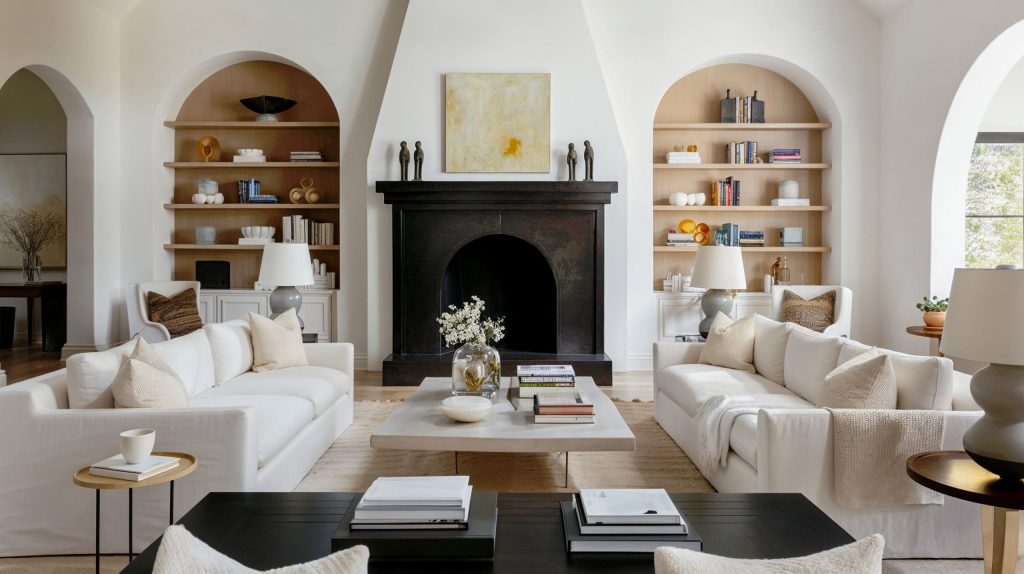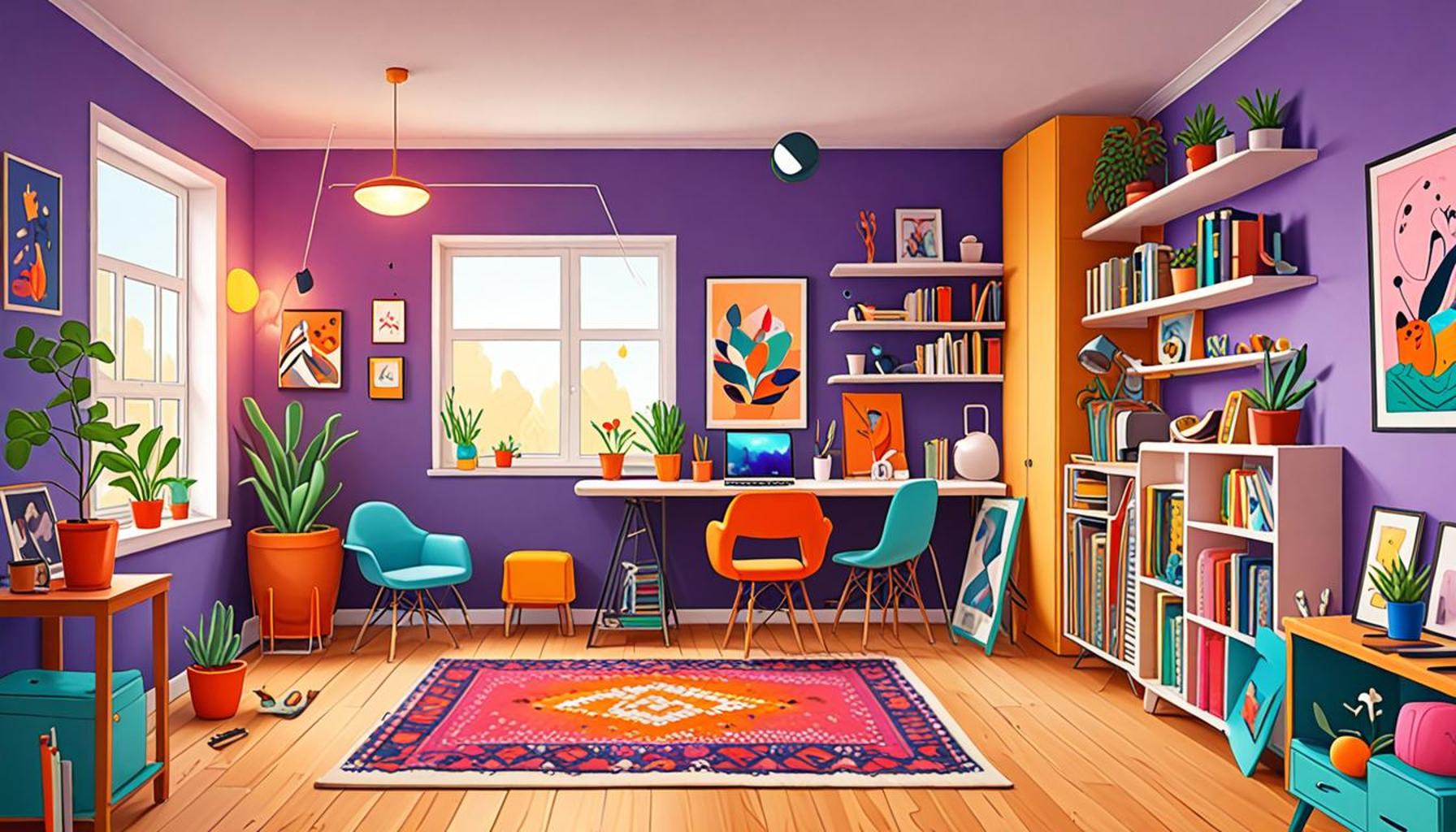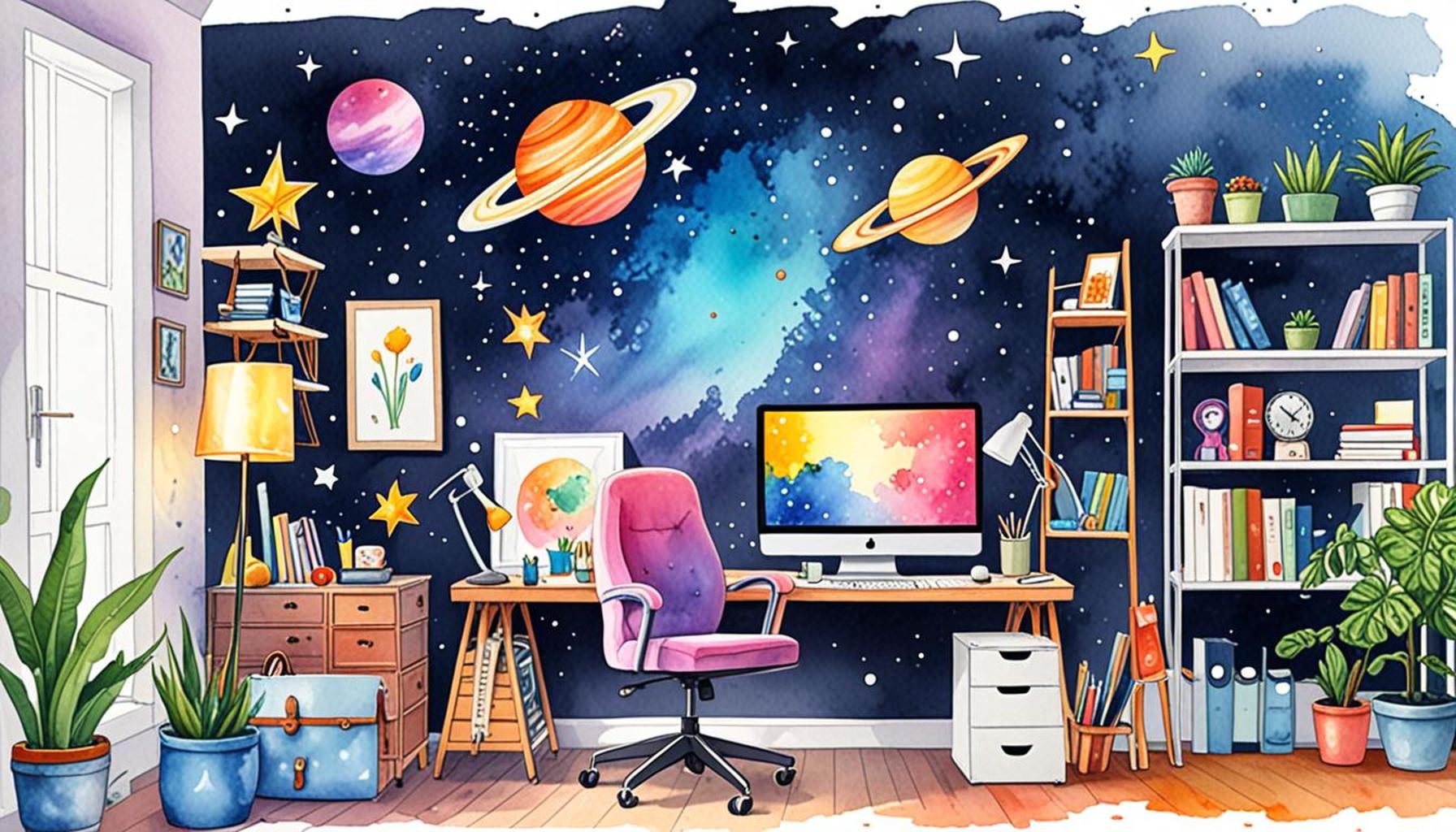Tips for Creating Multi-Functional Spaces at Home Expert Guide

Enhancing Spaces for Modern Living
In a contemporary world where urban living often equates to smaller, more confined spaces, the need for optimizing both space and function is more crucial than ever. This shift has propelled the concept of multi-functional spaces into the spotlight. These dynamic areas not only serve a single purpose but can effortlessly transition to accommodate a variety of activities, enhancing both comfort and efficiency in our daily lives.
Transforming your living environment begins with understanding the myriad ways to wield your space. An excellent example of this is the guest room—typically reserved for infrequent use. By integrating a sleek desk, ergonomic chair, and ample lighting, this area can easily serve as a productive home office when guests are not present. Similarly, a living room equipped with a fold-down projector screen and comfortable seating can double as an inviting cinema for movie nights. The potential for reimagining your space is only limited by your creativity and planning.
Key Features of Multi-Functional Spaces
- Versatility: One of the primary hallmarks of a multi-functional space is its ability to switch roles seamlessly. For instance, consider a dining room that transforms into a workspace by day and a formal setting for dinner parties by night. Employing collapsible furniture can aid this transition significantly.
- Storage Solutions: To maintain an organized environment, clever storage is crucial. Investing in furniture with built-in storage, such as ottomans that open up or beds with drawers underneath, can significantly reduce clutter. This allows areas to remain tidy and functional, irrespective of their primary use.
- Color Schemes: The strategic use of color can help demarcate separate areas within the same room. Painting one side of a room in a calming hue can signify a workspace, while bright and warm tones in another corner can foster a vibrant, social atmosphere. Using area rugs can also provide visual boundaries, further enhancing the feeling of distinct spaces.
By employing these smart design elements, homeowners can revolutionize their living spaces to align with modern needs. Think of these strategies as not just enhancements but as a fundamental redefinition of how you interact with your home. Consider the possibilities: a gym that transforms into a yoga studio and a guest room that acts as a serene retreat or creative workspace.
Delve into these transformative ideas and embrace functionality and creativity within your home. With well-planned multi-functional spaces, you can greatly enhance both your living experience and the aesthetic appeal of your surroundings. The journey of maximization and revitalization in your home is not just possible; it’s a step towards a more thoughtful and enjoyable lifestyle. Whether you live in a bustling city apartment or a quaint cottage, seize the opportunity to elevate your space today.
SEE ALSO: Click here to read another article

Strategic Design for Maximum Utility
Creating multi-functional spaces in your home is not merely an aesthetic initiative; it is an ambitious goal to enhance the functionality of every square foot. The challenges of contemporary living demand that we rethink how we utilize our environments. When designing these spaces, it’s vital to be intentional about the key elements that will allow for seamless transitions between various activities, making your home more accommodating and enjoyable.
One of the first steps in achieving a multi-functional space is to assess your needs and identify which areas of your home could benefit from increased functionality. This process may involve envisioning how a single room can cater to multiple purposes. For instance, consider a home office that doubles as a guest bedroom. By incorporating a murphy bed and a compact work desk, you can efficiently allocate space for both work and rest. The result is a harmonious blend of productivity and relaxation, tailored to your lifestyle.
Essentials for Designing Multi-Functional Areas
- Flexible Furniture: Invest in transformative furniture that can easily change forms. Items like extendable dining tables, convertible sofa beds, and nesting tables allow for optimal use of limited space. These pieces are not only practical but also stylish, allowing you to maintain chic decor without sacrificing functionality.
- Open Layouts: The modern trend leans towards open-concept living. By removing non-essential walls, you can create larger, fluid spaces that encourage interaction and versatility. For instance, a combined kitchen and living area could serve as an entertainment hub, easily accommodating cooking, dining, and socializing simultaneously.
- Smart Technology: Incorporating smart home technologies can vastly improve the functionality of your spaces. From voice-activated assistants to smart lighting systems, these innovations can help control mood and atmosphere, seamlessly adjusting from a workspace to a relaxation zone with just a few commands. Consider employing smart sensors that can customize settings based on your presence or time of day.
- Zone Definition: When designing multi-functional spaces, it’s crucial to define various zones using furniture layout, rugs, or decorative screens. This creates a sense of structure, even in a shared space. You can designate a corner as a relaxation nook with a cozy chair and bookshelf while keeping the opposite side as an active workspace. This helps in mentally separating different activities, leading to greater functionality.
By focusing on these essential design aspects, you pave the way for a more versatile home that fits your needs and reflects your taste. As you embark on the journey of reimagining your spaces, remember that flexibility is key to ensuring that each area continues to serve a meaningful purpose. Embrace creativity, and watch as your home transforms into a multi-functional haven tailored for modern living.
| Category | Description |
|---|---|
| Space Optimization | Utilizing vertical storage solutions and modular furniture to maximize space. |
| Versatile Design | Creating a cohesive aesthetic that allows for easy transitions between activities, such as working and relaxing. |
| Functionality | Choosing furniture that doubles as storage, e.g., ottomans that open up or coffee tables with shelves. |
| Flexibility | Incorporating moveable components like folding tables and collapsible chairs to adapt to different needs. |
Creating multi-functional spaces at home provides the opportunity to cater to different needs without overwhelming your area. Space optimization is crucial; utilizing vertical storage solutions and modular furniture can significantly maximize the limited space you have. Versatile design is equally important, as it allows for a smooth transition between various activities within the same area, enhancing comfort and functionality. When selecting furniture, focus on items that serve dual purposes. For example, an ottoman can provide seating and storage, while a coffee table might include shelves for organization. Furthermore, consider incorporating flexibility within your layout by using moveable components like folding tables or collapsible chairs, enabling quick adjustments as per your daily demands. By employing these strategies, you can transform any area into a seamless blend of style and practicality, encouraging productivity while offering a cozy sanctuary for relaxation.
CHECK OUT: Click here to explore more
Innovative Storage Solutions for Optimal Space Management
To fully embrace the concept of multi-functional spaces, it’s essential to consider the role of innovative storage solutions. With the right storage options, you can declutter your environment and maximize the available space, allowing each area to serve multiple purposes without feeling overcrowded. Effective storage not only optimizes functionality but also enhances the overall aesthetic of your home.
Smart Storage Strategies
- Built-in Shelving: Implementing built-in shelves can dramatically transform a room. They utilize vertical space while providing essential storage without consuming additional floor area. In a home office, for instance, shelves can house books, supplies, and decorative elements, creating a functional yet visually appealing environment.
- Under-Furniture Storage: Don’t overlook the space beneath your furniture! Utilize under-bed storage boxes or furniture with built-in drawers to stow away seasonal items or less frequently used belongings. This approach is particularly effective in smaller rooms, where each square foot counts. Ottomans or coffee tables with hidden compartments also serve dual purposes while keeping the space organized.
- Multi-Purpose Cabinets: Cabinets that serve dual roles can be a game-changer in creating multi-functional spaces. For example, a sideboard in the dining area can hold tableware while also functioning as a buffet when entertaining guests. Additionally, consider cabinets with sliding doors to keep clutter discreetly hidden, offering a seamless transition from active household areas to more serene zones.
- Hooks and Pegboards: Utilize wall space efficiently by installing hooks or pegboards. They provide accessible storage for items like bicycles, tools, and gardening supplies while keeping the floor clear for other activities. In workshops or craft rooms, pegboards can help organize tools, making them easy to find and ready for use.
- Mobile Storage Solutions: Think about incorporating mobile storage units such as rolling carts or cabinets. These versatile pieces can be easily relocated based on your current needs, whether it’s a bar cart that enhances social gatherings, a craft station that can be tucked away, or a kitchen cart that provides additional counter space.
Another crucial consideration is how color and design can influence perception and functionality in multi-functional spaces. Opt for a cohesive color palette throughout interconnected areas to create a sense of unity. Lighter shades can help make spaces feel larger, while strategic use of color accents can delineate different functions within a shared area. Additionally, utilizing mirrors can give a space an illusion of depth, enhancing the sense of openness.
In the dynamic landscape of modern living, integrating innovative storage solutions and thoughtful design will not only elevate the practicality of your home but will also foster a more organized and aesthetically pleasing atmosphere. This intentional approach to utilization will empower you to live harmoniously within your space, enjoying the versatility that multi-functional areas provide.
CHECK OUT: Click here to explore more
Conclusion: Embracing the Future of Living Spaces
In today’s fast-paced world, the design of our homes must evolve to meet the demands of multifunctionality. By implementing innovative strategies, we can create multi-functional spaces that enrich our daily lives and enhance our living environments. Key considerations, such as optimizing vertical and vertical space and integrating clever storage solutions, allow us to reclaim areas that may have felt cramped or underutilized.
The use of built-in shelving, under-furniture storage options, and multi-purpose furniture plays a pivotal role in shaping a flexible home. When combined with a cohesive color palette and thoughtful design elements such as mirrors, these strategies not only create harmony but also promote a sense of spaciousness. Furthermore, the adaptability offered by mobile storage units empowers homeowners to transform their spaces effortlessly based on their needs—all of which contribute to a more functional and enjoyable living experience.
As you embark on your journey to create more versatile spaces, consider the unique needs of your household and embrace the myriad of possibilities at your disposal. By leveraging these expert tips for creating multi-functional spaces, you can not only maximize the potential of each room but also elevate your lifestyle. Remember, your home is a canvas—one where creativity, functionality, and style can coexist beautifully. Explore, experiment, and redefine your home in a way that makes it truly your own.


